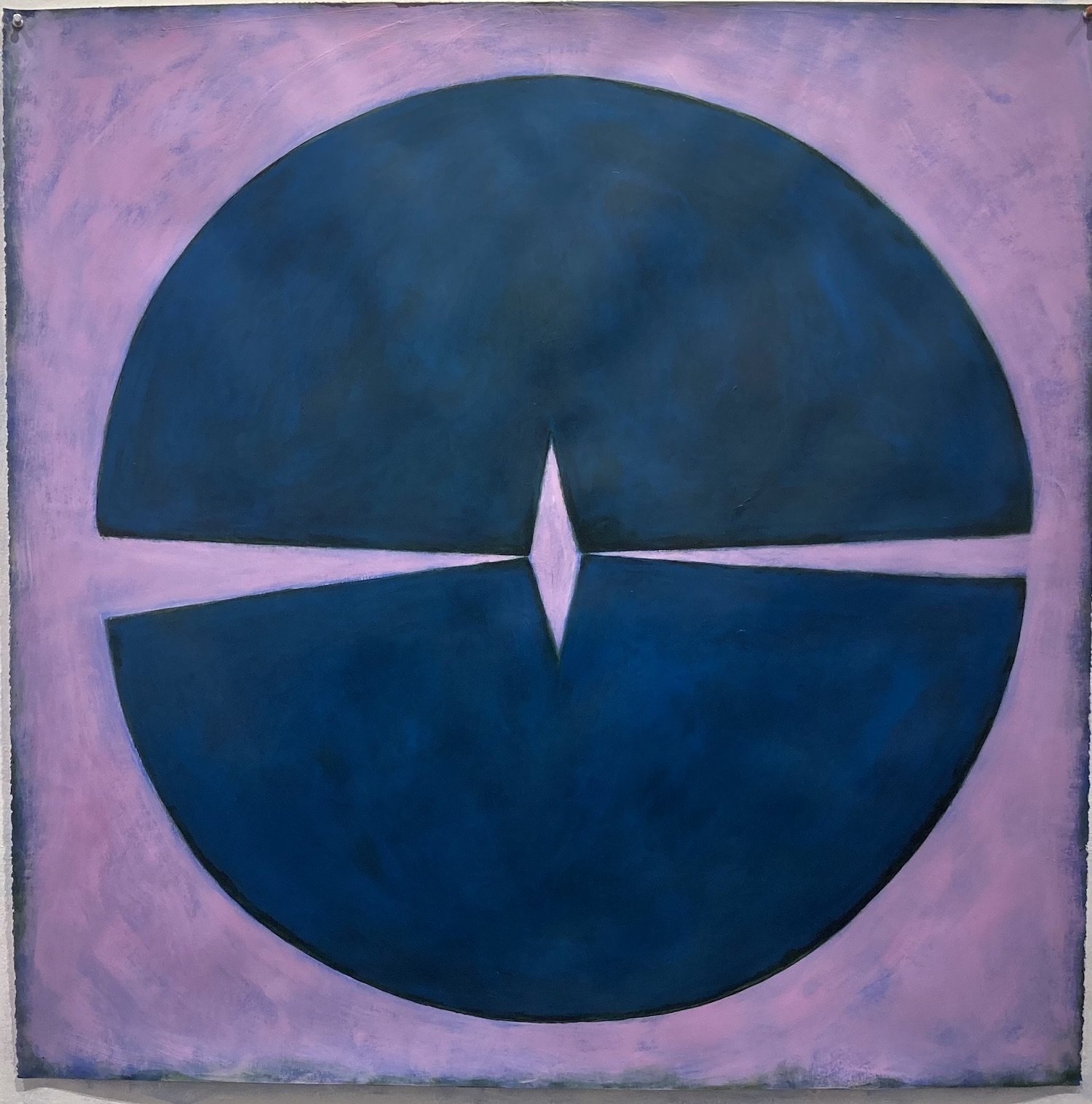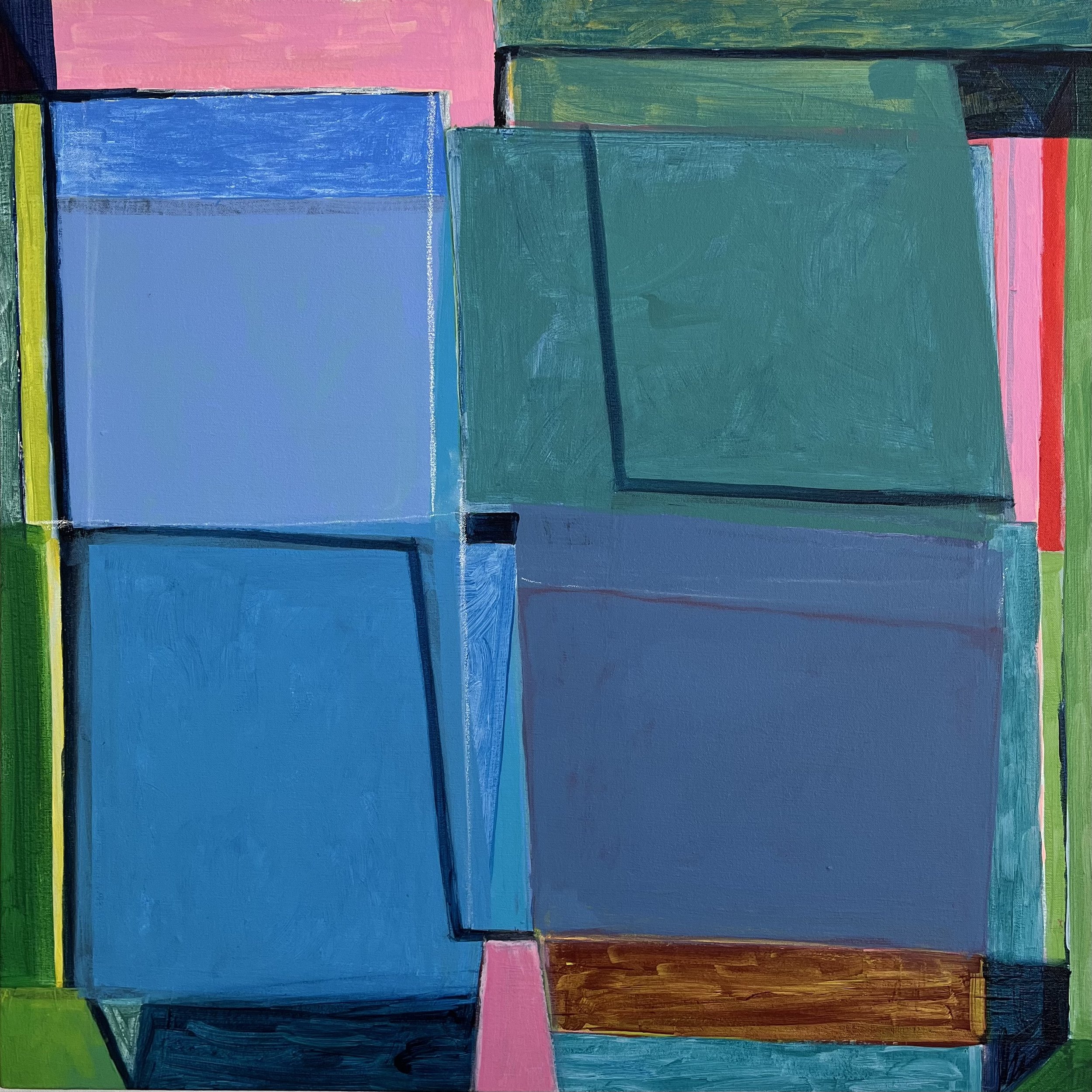Leigh Blanchard: "Heartland"
February 22 - March 24, 2024
Opening Reception: Saturday, February 24, 4-6 PM
440 Gallery is pleased to present Heartland, the Gallery's third solo exhibition of Leigh Blanchard's abstract photographs. Blanchard challenges the nature of photography by creatively capturing and manipulating images printed with pigmented inks on fine art paper. Examining the theme of family and creativity, Blanchard's delicate yet bold photographs are directly and indirectly inspired by her grandmother's paintings, which will be also be shown in the gallery.
Blanchard uses mechanistic tools, such as a camera and computer, to create her intimate yet subtle relationship with the viewer. She always begins with an emotional and visual source - in this collection, works by her grandmother, Jean Schneider Johnson, inspire her photographs. Blanchard's process is improvisational: cutting, scanning, digitally manipulating and collaging her source materials until an aesthetic balance is reached. At first glance, the images could be abstract expressionist paintings. There is a duality to the images - they do not look like traditional photographs, but at the same time, the viewer is asked to reimagine what photography can be.
In this exhibition, viewers have the unusual opportunity to see the original inspiration alongside Blanchard's interpretations. Both artists have very different styles - abstract expressionism for Blanchard and realism for Johnson. In Blanchard's Grapes #3, the foreground is out of focus, as if you were too close to the image. Past this layer, you can see a form that's difficult to pinpoint but feels oddly familiar. Comparatively, in Tedium: Iowa Sun, Iowa Corn, Johnson's focal point is the husks of corn and the rising sun - both explicit. When seen together, Johnson's realism only enhances the abstract nature of Blanchard's work. In Blanchard's photography, the hand is invisible while in Johnson's paintings, the artist's hand is part of the expression. Ironically, Johnson's paintings are more realistic than the photographs.
Beyond the similar palette, there is an emotional sensitivity across Blanchard’s and Johnson’s work that evokes their family relationship. Blanchard has appropriated, consciously and unconsciously, from her grandmother’s work with a gentle touch that can be felt when seeing their work together.
“Celebrating creative expression, I am fascinated by the passion to create and how it runs in families. Just as children take certain traits from their parents, I’ve taken elements of my grandmother’s work and made it my own. This process has made me reflect on how traits — visual and conceptual — are passed down genetically. This is my opportunity for a multigenerational exhibition. It is a family tree of artwork.”
Born in Chicago, Blanchard graduated from the Parsons School of Design: The New School with a degree in photography. Blanchard currently lives and works in NYC. She has exhibited at various galleries, including at Milk Gallery, Site:Brooklyn and Gallery MC.
Born in Iowa, Jean Schneider Johnson is a self-taught artist who currently lives and works in her home state. Johnson has been painting and drawing since childhood and credits her father, Gottfried Schneider, for introducing her to the art world.
Project Space: Chuse, Flanery and Orrok in “Color Connections”
The commitment to color and abstraction in the art of Ellen Chuse, Gail Flanery and Catherine Orrok is evident in Color Connections. The way color influences our perception of space and form is the essential component that links these stylistically varied approaches. It is the meditative quality of color relationships that forms the dialog between the paintings and monotypes of these three artists.
Ellen Chuse is best known for her vibrant, color-saturated acrylic paintings on paper. Pairing archetypal forms with intense layered color, her paintings contain inherent mysteries of both scale and context. Quiet contemplation can reveal a vibrancy that belies the seeming simplicity of the forms while rewarding us with deeper meanings. In these recent paintings, Chuse explores new color palettes and new forms, thereby expanding her repertoire.
Gail Flanery’s monotypes always begin with the consideration of her palette. As she builds up the color fields, the process becomes painterly. In fact, the monotype is often referred to as the “painterly print.” Flanery effectively unites abstraction and landscape through her atmospheric use of color along with the addition of references to the natural world. She deftly communicates her reverence for nature through these unique prints.
Catherine Orrok’s geometric abstraction uses the grid as a starting point but creates an unstable dynamic through her use of color and layering of forms. Color creates complex spacial effects that generate movement not just across the surface, but also back and forth in a shallow third dimension. In modern art, the grid often signified the flatness of the canvas, but in these works, Orrok is asking us to acknowledge the primacy of our perceptions.




